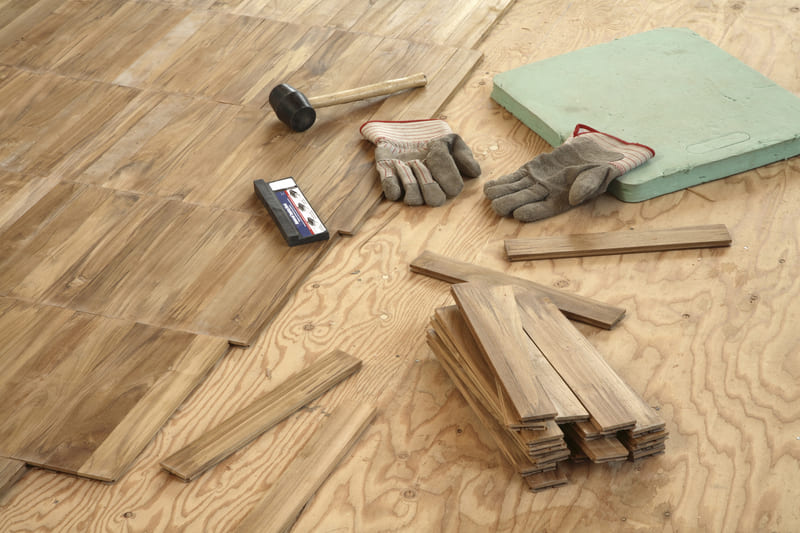
You may not think about it often or even know it exists, but your home’s subfloor is an integral part of its construction. A subfloor, or subflooring, is the layer between the joists, your floor’s lowest layer, and the underlayment that serves as the foundation for the finished flooring you actually walk on.
Subflooring provides a stable, level surface for the easy installation of new flooring, and it also makes your floors smoother to walk on. A properly installed subfloor can last throughout the entire life of your home, but with defects or underlying issues, it can become worn out in as little as 20 to 30 years.
Unless you built your own home or recently did a floor replacement, it’s hard to know what’s going on underneath the finished flooring. We’ll go over some telltale signs that let you know when to replace your subflooring.
Subfloor Replacement Warning Signs
Here are some of the main indicators that your subflooring needs a look.
Squeaky Floors
It’s not uncommon for floors to squeak slightly, especially in an older home, but it can also be a sign of issues with your subflooring. If the subfloor begins to warp or twist, it may rub up against nails, causing the squeaking noise. Squeaky floors aren’t necessarily a cause for alarm, but they could mean you’re due for a subfloor replacement.
Sinking or Sagging
One sure sign there’s an issue with your subfloor is sinking or sagging in your floors. This is commonly caused by moisture deteriorating the wood, but improper installation can also be a culprit. If you find yourself walking unevenly in certain parts of your house, you may want to contact a professional to diagnose and potentially replace your subfloor.
Cupping
Another issue caused by excess moisture in your subfloor is known as cupping. Cupping can be described as warping and curling along the length of the floorboard, creating a boat-like shape. Even a small cupped area can create inconsistencies in your flooring’s appearance.
Cracked Tiles or Bubbling Linoleum
Certain flooring materials, like tile, require a solid, rigid surface to be installed properly, and a warped or otherwise problematic subfloor may cause them to crack. This means one of the more easy-to-recognize signs of a compromised subfloor is cracked, popping tiles or bubbling linoleum. If you notice this in your home, it may be time for a subfloor replacement.
Musty Smell
There’s a definite theme running through all the potential indicators of subfloor damage, and that is the presence of moisture. A musty or acrid odor emanating from your floor is another way to tell that moisture has seeped in. There could be mold or water damage below the surface, which is something you will definitely want to have assessed by a professional.
Schedule a Subfloor Replacement
Some of the most experienced DIY enthusiasts still don’t know how to replace subflooring. Once you’ve determined you need a subfloor replacement, don’t be afraid to call a professional. You can also get ahead of the curve by renting a roll-off dumpster or commercial dumpster to store the debris and loose materials produced during the course of the project.
Contact ASAP Site Services to schedule a roll off dumpster rental—we’ll be happy to set up delivery for you through one of our local providers. Call (888) 413-5105 or book online today to get started.
